The Scottish fisherman who defied Donald Trump
The man who stood up to Trump

The political and legal wranglings of former president Donald Trump may never be far from the headlines but before he took the White House, he was best known as the head of a family business that specialized in luxury real estate. Despite his self-styled approach as the ultimate dealmaker, he met his match when he went head to head with a Scottish fisherman. Click or scroll to discover more…
Donald Trump’s golf empire

It’s been well-documented that Donald Trump is a golfing fanatic, racking up a reported 298 daytime visits to golf courses during his time as president. From New York to Florida, California, Virginia, New Jersey and North Carolina, the part of his business empire known as Trump Golf own multiple properties across the USA where wealthy members are able to work on their swing. Internationally, there are resorts located in Dubai, Bali, Ireland and Scotland. Donald Trump’s mother was born on the Hebridean Isle of Lewis, and so setting up a base in Scotland was particularly important to him.
Balmedie sands

The site of Balmedie near Aberdeen in northeast Scotland was selected and in 2006, Trump bought a 1,400-acre coastline plot with the intention of turning it into "the world's best golf course". The beach at Balmedie is known for having the fifth-largest dune system in Britain. It was named as a Site of Special Scientific Interest thanks to the unique habitat of marram grass and wetlands that support local wildlife. Environmentalists were outraged at the threat to the 4,000-year-old natural wonder, and residents were even more incensed…
The Scottish fisherman
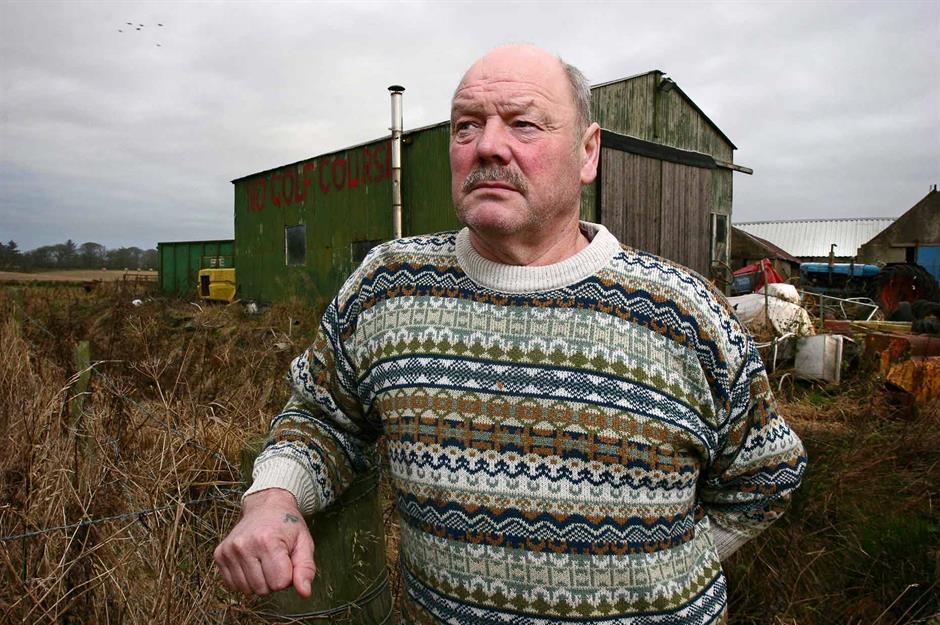
Perhaps the most vocal of these was Scottish fisherman and quarry worker Michael Forbes, who had lived on his 23-acre farm with his mother, Molly, for a lifetime. He flat out refused to sell his home to Trump, which sat right in the middle of the proposed second hole and hotel site, and so started a feud between them that would go on for years.
In the rough
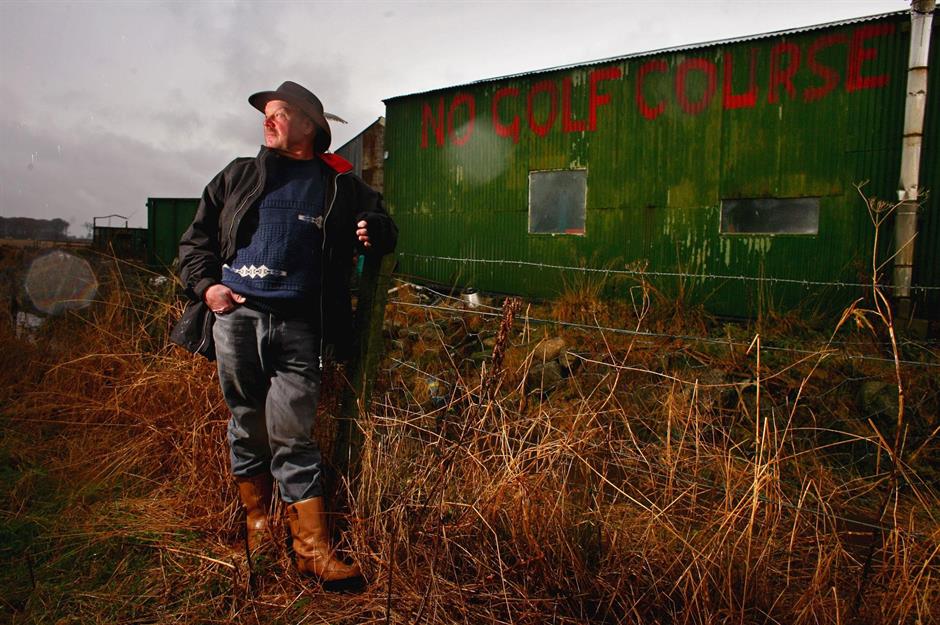
In November 2007, Trump’s controversial property proposal was thrown out in a knife-edge vote by local councilors of Aberdeenshire Council's infrastructure services committee after facing fierce opposition from local residents and environmental campaigners. But the decision was overturned in 2008 by the Scottish government, who said the economic benefit and thousands of promised jobs in the area outweighed the potential damage to the ecologically sensitive landscape or detriment to the community.
Breaking ground

Following the U-turn, work on the site began in 2009. Forbes was even supposedly enticed with an offer of $578,000 and a job on the golf course paying $64,000 a year but declined the offer. He told The Guardian: "I’ll never, ever sell to that loudmouth bully.” Infuriated by Forbes' refusal to move, Trump branded the Scotsman “a disgrace” and described his home as "slum-like, he lives like a pig" in a 2011 documentary entitled You've Been Trumped.
You've been Trumped
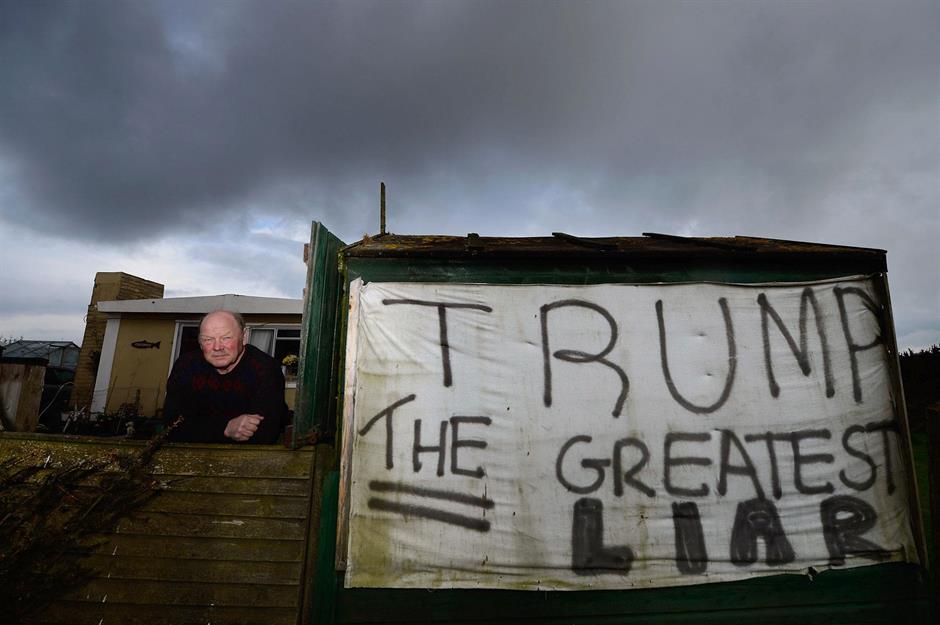
According to the documentary, Trump Corporation staff even went as far as to reportedly remove a boat belonging to Forbes and fenced off parts of his land in 2010. Forbes' farm is now completely enclosed in the middle of the golf club resort. In a follow-up documentary entitled You’ve Been Trumped Too, Forbes claims that the construction of a road took out their well and drinking water. Trump International has insisted it has "never, and would never, conduct the type of activity claimed" in the documentary.
The grand opening
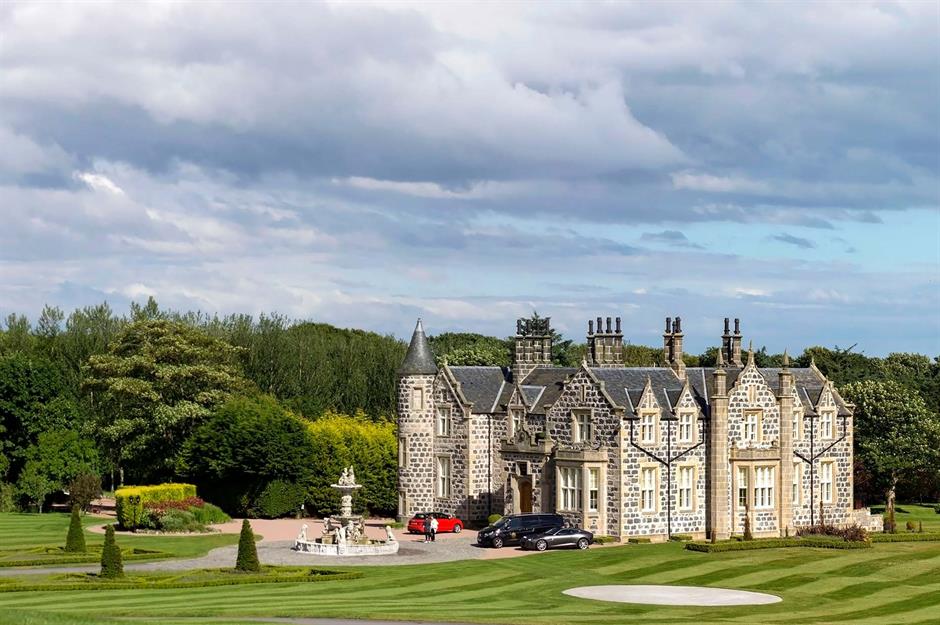
Despite the issues and opposition, the Trump International Golf Links course opened in 2012. The original plan was for a $1.4 billion coastal resort with two golf courses, a hotel and around 1,000 holiday homes. Pictured here, MacLeod Lodge, which resembles a tureted fairytale castle, is the grand main building on the site, named after Trump's mother, Mary Anne MacLeod.
The Trump Estate

Luxury housing was always part of the plan, with the golf resort slated to include a man-made suburb of new-build houses called The Trump Estate. These historic-style properties start at $408,000 for a two-bedroom cottage and going up to $1.8 million for a five-bedroom manor house. But whether these are still on the cards is anyone's guess and the latest satellite images don't appear to show any signs of construction work underway.
Continuing problems

Resistance from the residents wasn't the only issue to plague the resort. In September 2011, the Trump Organization lodged a failed objection to the construction of a new wind farm off the coast near the new hotel and luxury housing development. In 2020, the sand dunes at Balmedie lost their special status, saying they have been irrevocably altered during the build. The pandemic has also had an adverse effect, with $1.4 million losses posted in 2020.
More real estate rebels who defied developers

Just like Forbes, these steadfast property owners resisted every attempt by powerful developers to drive them out, staying put while neighboring properties were razed to the ground. Against all odds, their real estate holdouts remained, incongruously juxtaposed to the surrounding construction sites or developments. Here are some notable examples from around the world.
Siegel-Cooper vs. Macy's Department Store
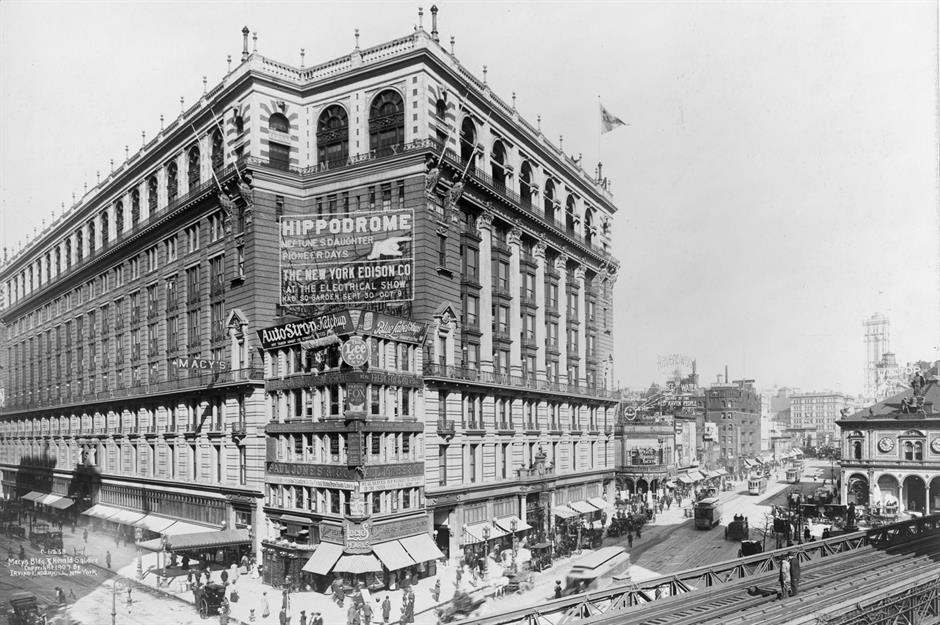
In order to fulfil its ambition to become the largest department store on the planet, Macy's was forced to build around a five-story structure on Manhattan's Herald Square. After discovering Macy's was buying up the entire block, rival retailer Siegel-Cooper acquired a plot on the corner of Broadway and 34th Street in 1900 and erected the five-floor building on the site in 1903 to thwart the plans.
Siegel-Cooper vs. Macy's Department Store
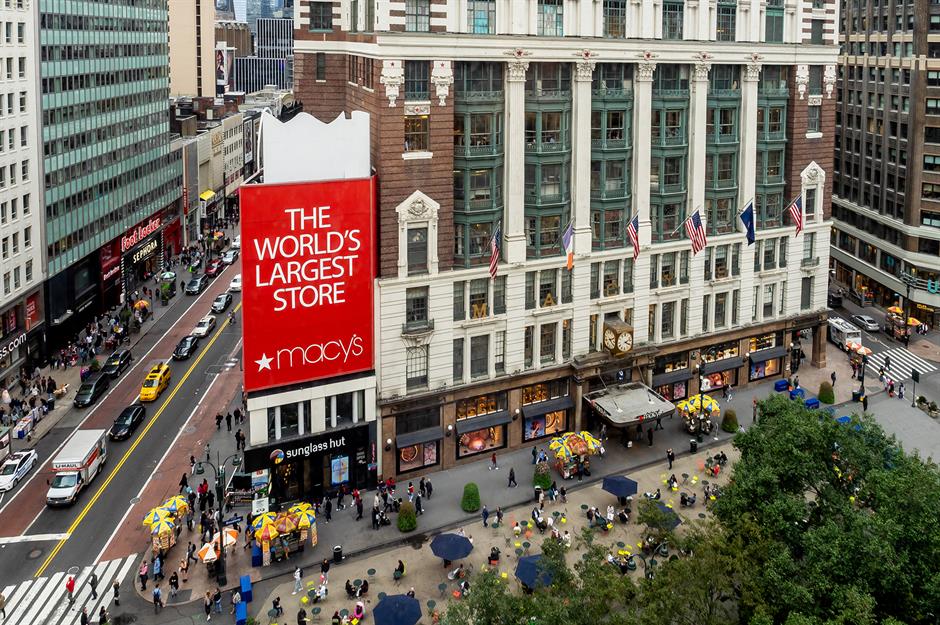
Siegel-Cooper had constructed what was then the world's biggest department store on Sixth Avenue in 1896 and was prepared to play dirty to keep the coveted title. Siegel-Cooper was also trying to force Macy's to relinquish its Sixth Avenue and 14th Street Location in exchange for the building. Macy's ignored the ploy and the building was sold in 1911 for a record million dollars. The spot has since been dubbed the 'Million Dollar Corner'.
Siegel-Cooper vs. Macy's Department Store
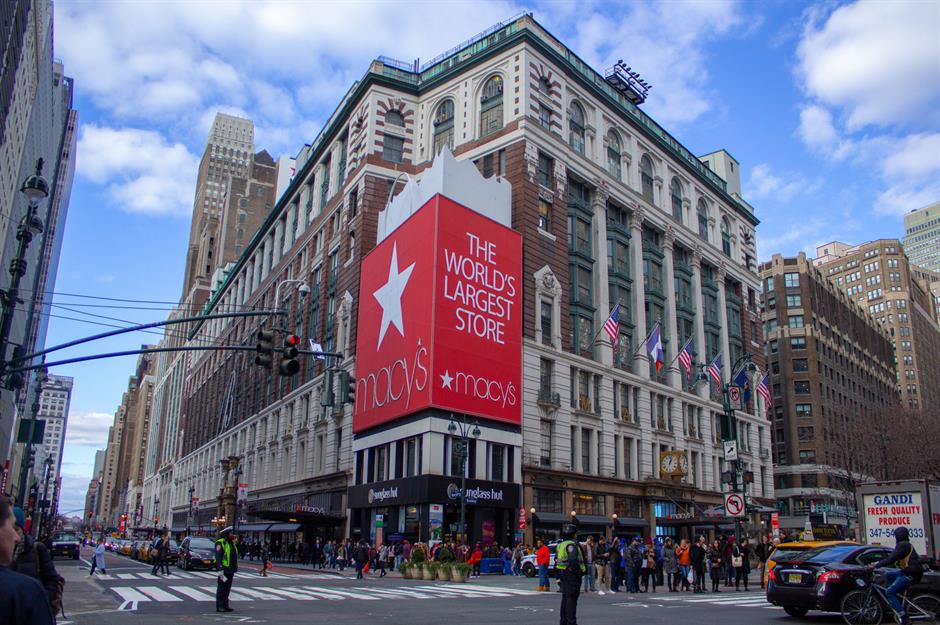
Vera Coking vs. Bob Guccione and Donald Trump
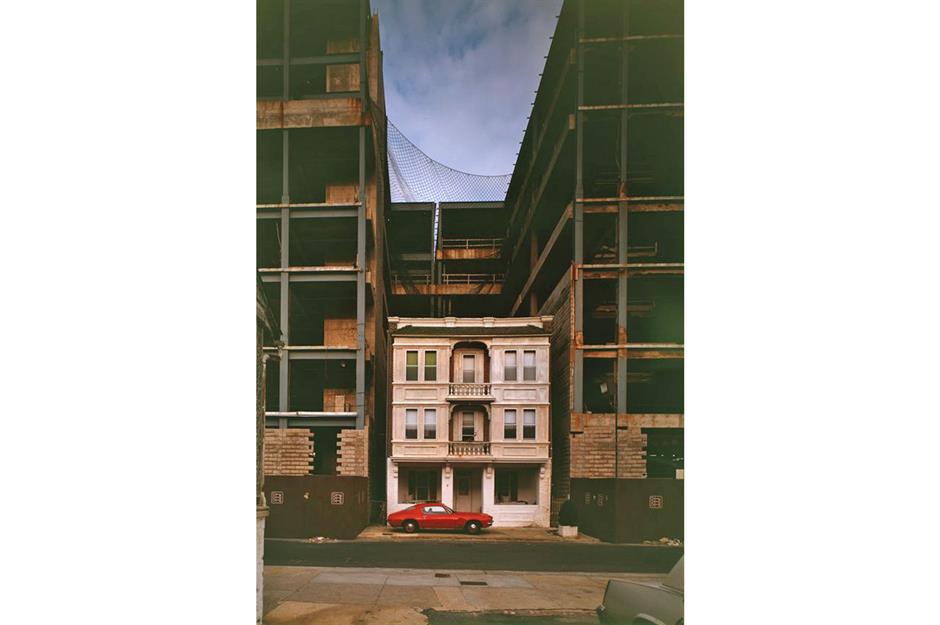
It's not just Michael Forbes who ended up at loggerheads with the Trump empire. Vera Coking bought her attractive three-story house in Atlantic City in 1961. The property served as a family home and boarding house for a time. Then the casino developers came knocking. Gambling was transforming the coastal city and Coking's house was situated in a prime location. In the early 1980s, Coking rejected a million-dollar offer from Penthouse founder Bob Guccione.
Vera Coking vs. Bob Guccione and Donald Trump

Vera Coking vs. Bob Guccione and Donald Trump

Demolition crews allegedly damaged the property and Trump petitioned the City to use the power of 'eminent domain' to condemn it but Coking battled through the courts, which ruled in her favor in 1998. Coking stayed put until 2010 when she relocated to a retirement home. The property was eventually sold in 2014 to investor Carl Icahn for $583,000 and the home was promptly demolished.
Mary Cook vs. Manhattan apartment developers
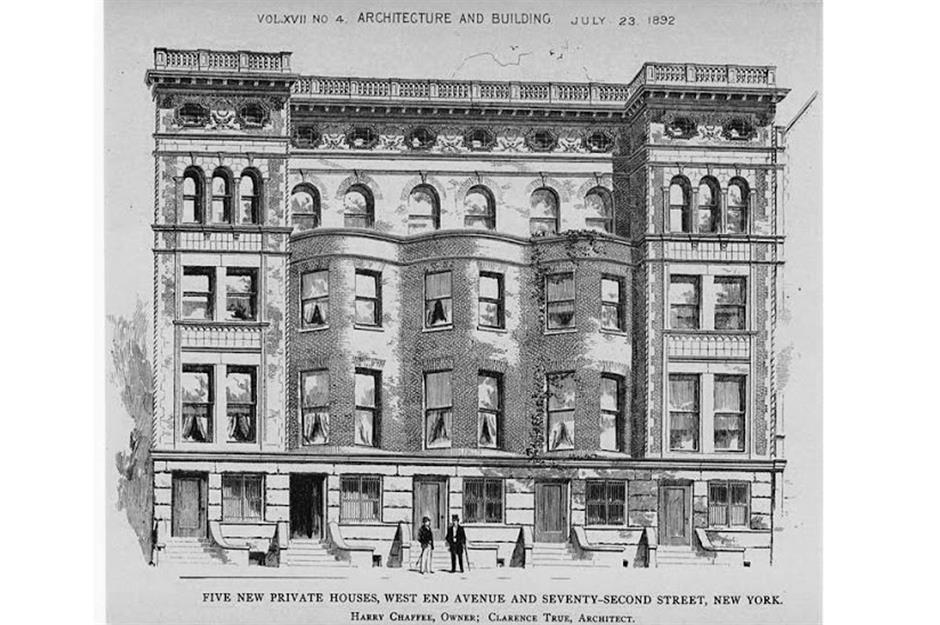
Back to the Big Apple, this handsome building that incorporated five elegant townhouses was built on the city's West End Avenue in 1893. Designed by esteemed architect Clarence Fagan True, the building resembled a single grand Gilded Age mansion. The house at number 249 was owned by the Cook family who moved in sometime during the late 1890s.
Mary Cook vs. Manhattan apartment developers

By 1915 only Mary Cook, the matriarch of the famous family remained. Cook's husband had died tragically in 1913 and her children had flown the nest. A slew of developers descended on the area and persuaded Cook's neighbors to sell up, but the widow refused to budge. Eventually, the attractive original building was partly demolished to make way for two lofty apartment blocks.
Mary Cook vs. Manhattan apartment developers
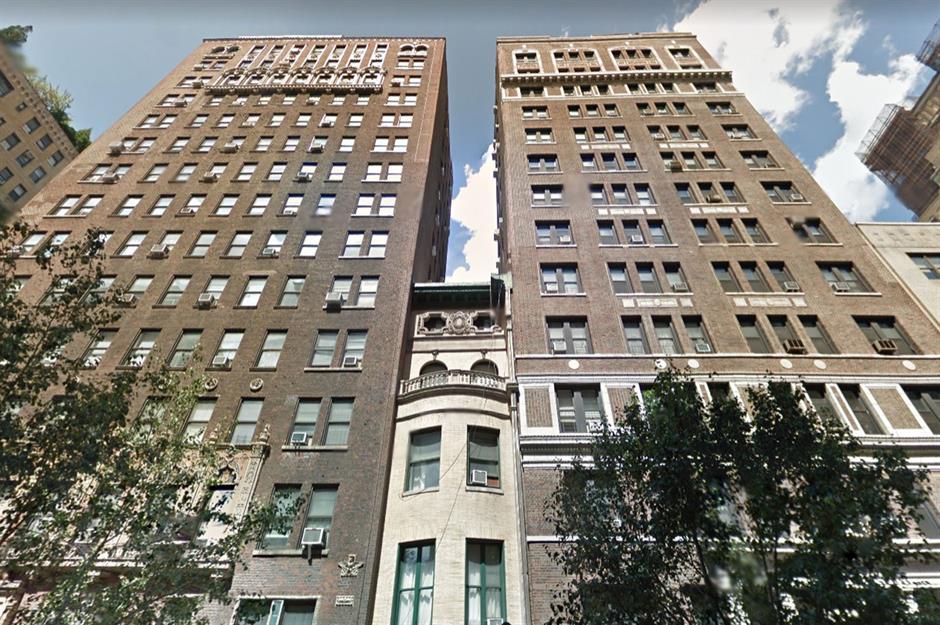
Cook's home, however, was left untouched, squeezed snugly between the pair of condominium buildings. The strong-willed widow died in 1932. The skinny house, which has escaped the wrecking ball to this day, was sold and converted into an art gallery before being split into a number of apartments.
The Spiegelhalter family vs. Wickhams Department Store
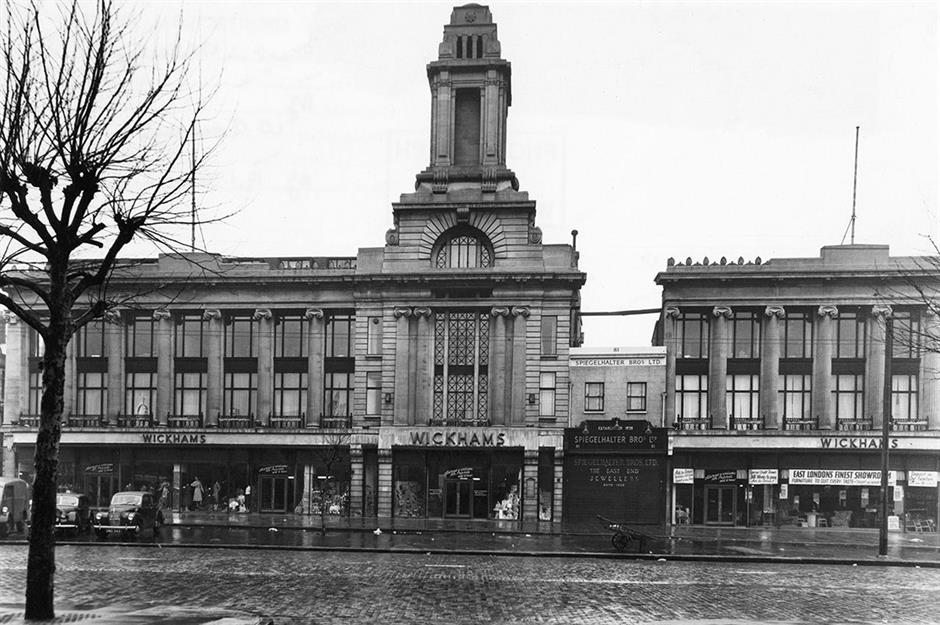
Nicknamed the 'Harrods of the East', the swish Wickhams Department Store on London's Mile End Road was actually modeled on Selfridges but unlike its rival in the West End, the retail space features a curious anomaly. As you can see from this photograph taken in the late 1950s, the building was bizarrely broken up by a small Victorian-era jewelry shop.
The Spiegelhalter family vs. Wickhams Department Store
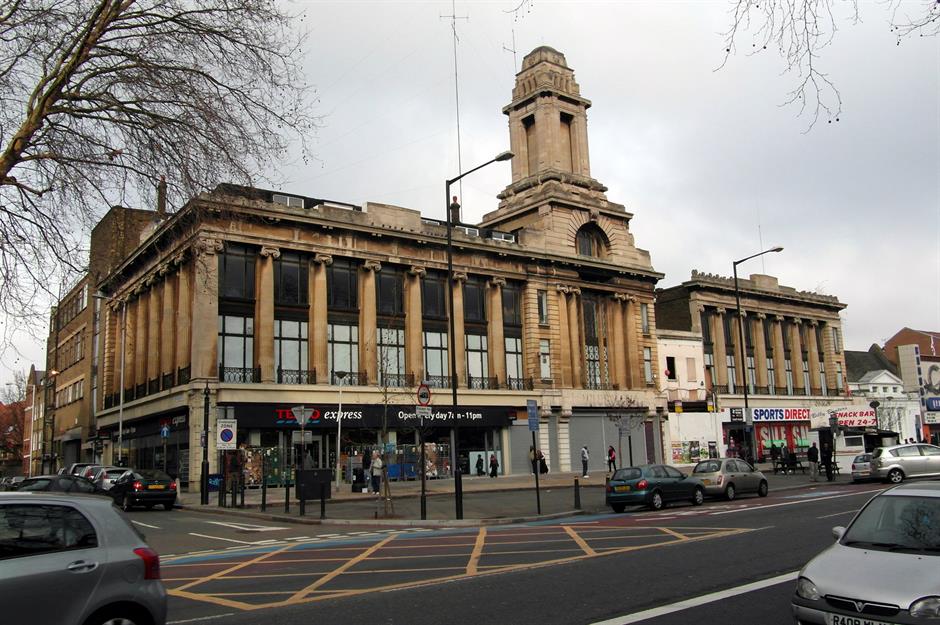
The Wickham family had a number of drapers shops on the block either side of a jeweler, which was owned by the Spiegelhalter clan. Business was brisk in the Wickhams' shops, so during the early 20th century, the family drew up ambitious plans to build a fancy department store. There was just one catch. The Spiegelhalters wouldn't sell.
The Spiegelhalter family vs. Wickhams Department Store

Though no doubt exasperated by the Spiegelhalters' stubbornness, the Wickhams completed their department store in 1927, constructing the building around the jewelry shop. The department store closed down in the 1960s, while the jewelry shop was shuttered for good in 1988. After falling into disrepair, the abandoned space was restored recently for posterity.
Edith Macefield vs. Ballard Blocks developers
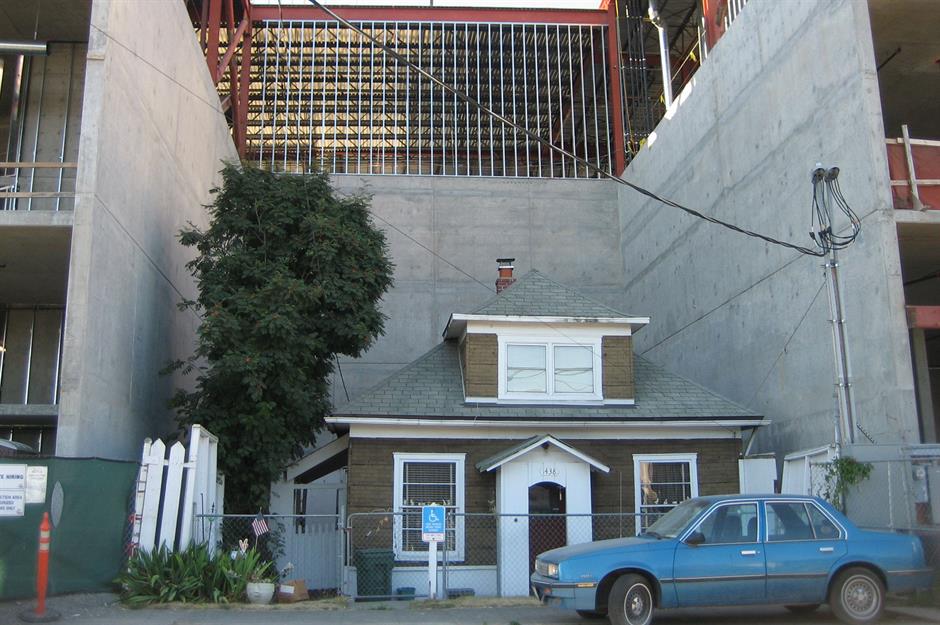
Back in 2006, octogenarian Seattle resident, Edith Macefield garnered folk hero status when she turned down a million-dollar offer from developers for her dinky house in the now hip Ballard neighborhood of Seattle, which was rapidly undergoing gentrification.
Edith Macefield vs. Ballard Blocks developers
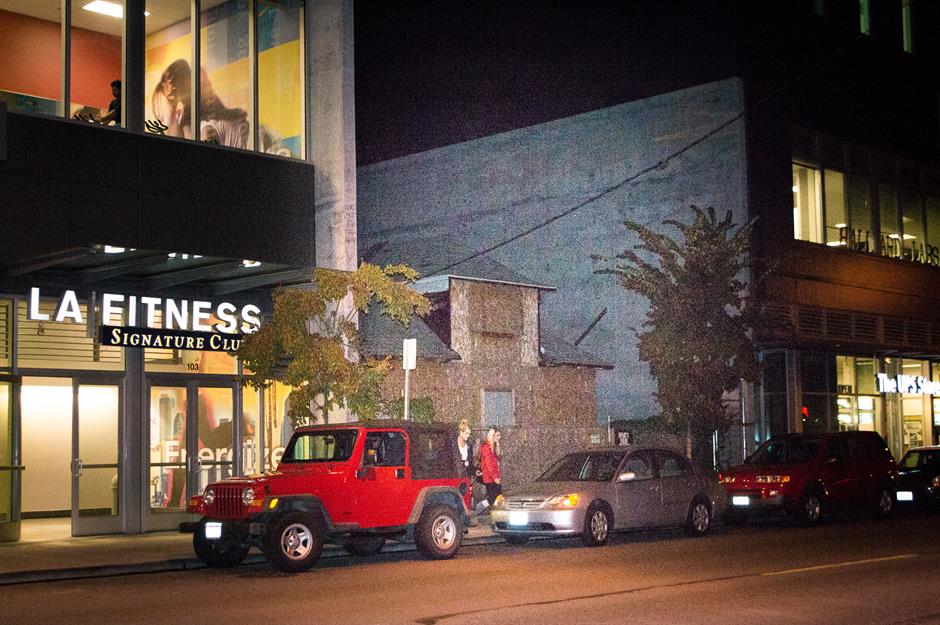
Macefield's tiny house was valued at just $6,000, though the land was worth $101,000, making her holdout all the more surprising. “I don't care about money,” she told The Seattle Times, “I'm 84. I'm perfectly happy here. And I don't want to move.” The powers that be ultimately gave up trying to persuade the elderly lady to sell and built the development around her modest home.
Edith Macefield vs. Ballard Blocks developers
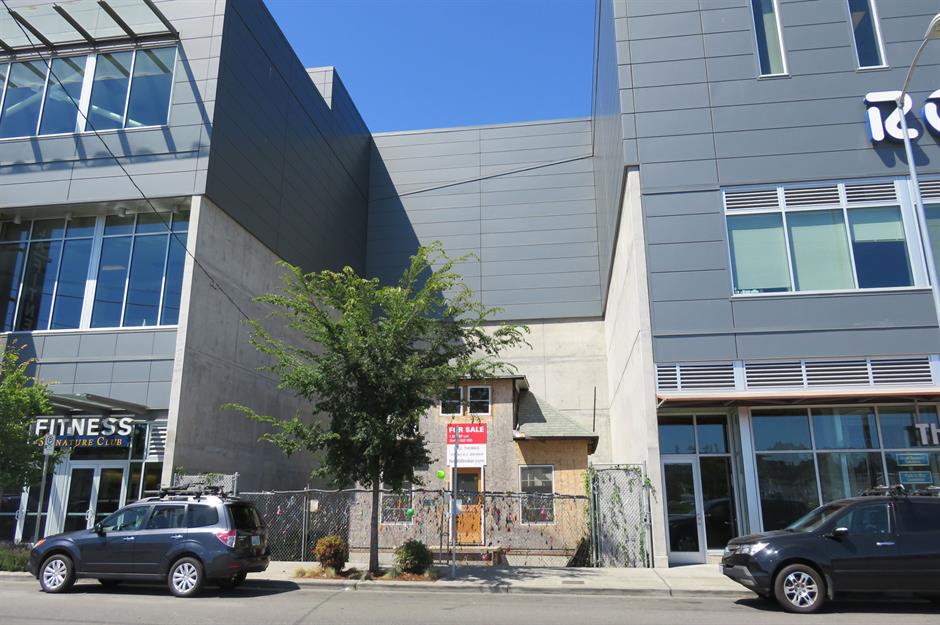
Macefield died in 2008. Interestingly, the property was bequeathed to Barry Martin, the new building's construction manager with whom she had struck up a friendship. Not long after her passing, Martin sold the house for $300,000 and despite rumors that the property has been earmarked for demolition, it still stands, a testament to its late owner's resilience.
Saint Joseph Catholic Church vs. Joske’s of Texas
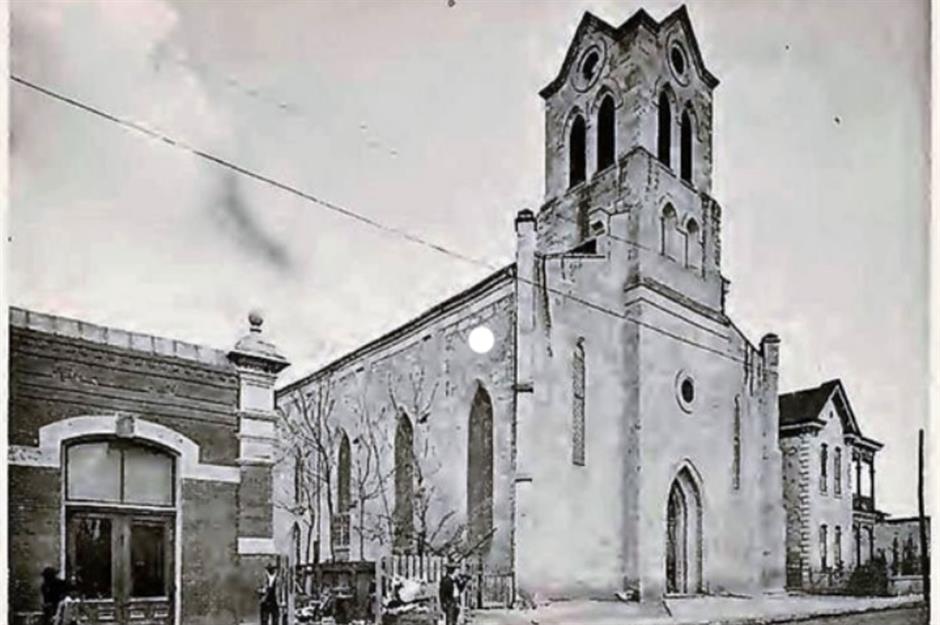
Funded by members of the local German Catholic community, the Gothic Revival Saint Joseph Church in San Antonio was completed in 1871. A soaring steeple was added in 1898 and exquisite stained glass windows were installed in 1902 at great cost. By this time, the building had become a major landmark in the Texan city.
Saint Joseph Catholic Church vs. Joske’s of Texas
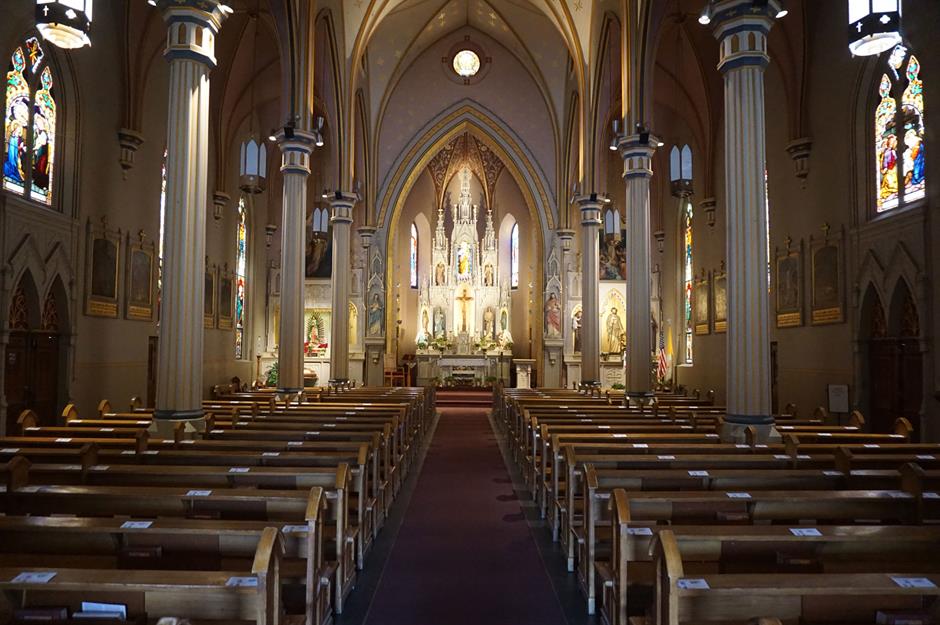
Saint Joseph Catholic Church vs. Joske’s of Texas
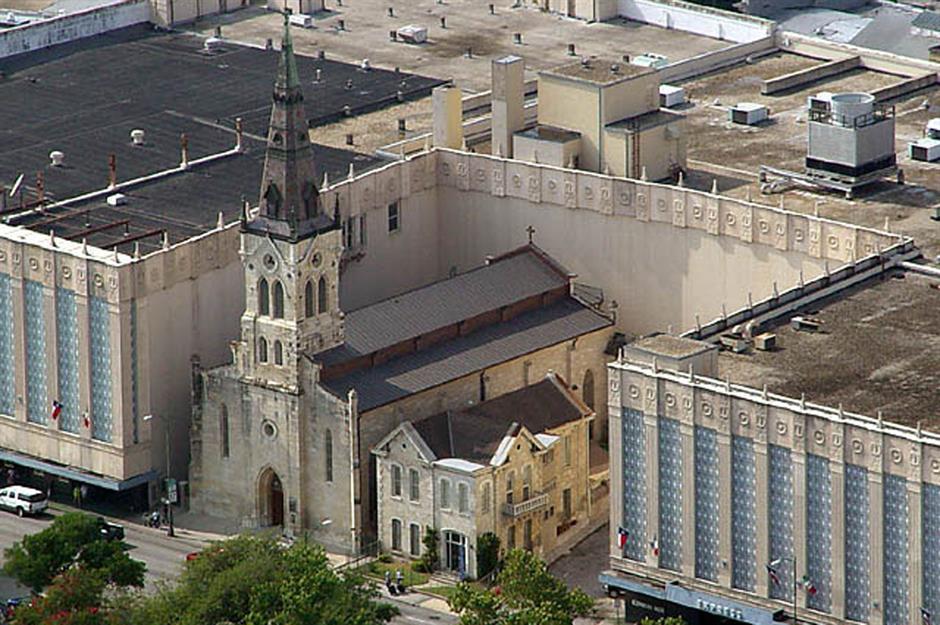
Joske's went ahead anyway and constructed the department store (which was converted some time ago into the Shops at Rivercenter mall) around the beloved place of worship. The church is now known as the 'Jewel in the Heart of San Antonio' in spite of the rather less than iconic shopping center that envelopes it.
Wu Ping and Yang Wu vs. Chongqing shopping mall developers

Wu Ping and Yang Wu vs. Chongqing shopping mall developers

In 2004, the Wus were approached by developers who wanted to raze the property to build a shopping mall. Unimpressed by the derisory compensation offer, the couple refused to move even after their neighbors had been bought out. Eventually, their home stood on a raised mound in the middle of a construction site and the developers shut off the power and water.
Wu Ping and Yang Wu vs. Chongqing shopping mall developers

In March 2007, a court order was issued to remove the couple who courted the media and became a 'cause célèbre'. Yet the pair ignored it and stood their ground. Thanks to their stubbornness, the Wus bagged a new apartment of the same size and finally called it a day on their three-year fight the following month.
Randal Acker vs. TriMet
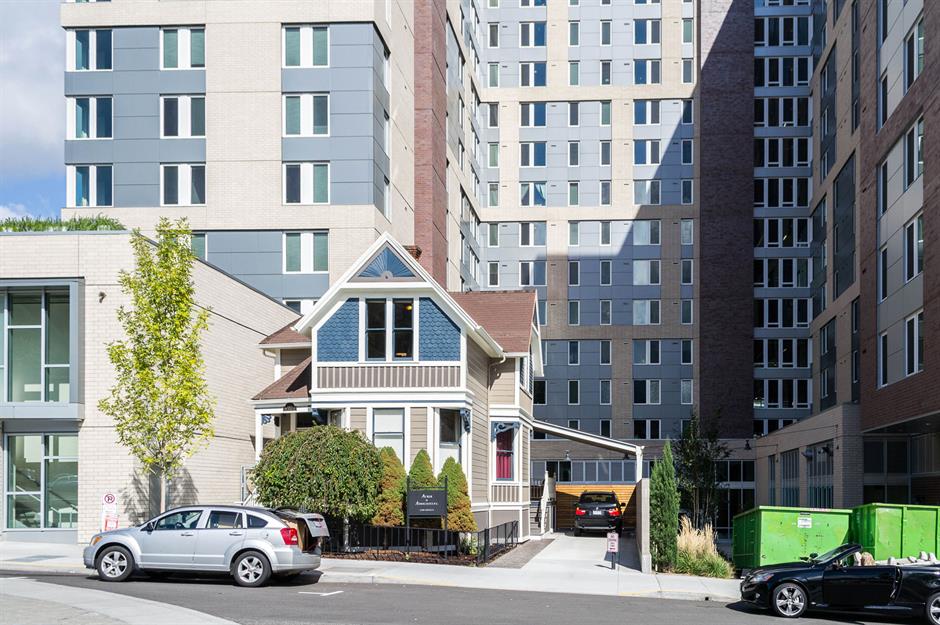
In 2005, lawyer Randal Acker purchased a charming Queen Anne house in downtown Portland for $380,000 and christened the property the Figo House after his dog. The house served as the attorney's office. Yet a year after he bought it, Acker's property was facing the bulldozers.
Randal Acker vs. TriMet
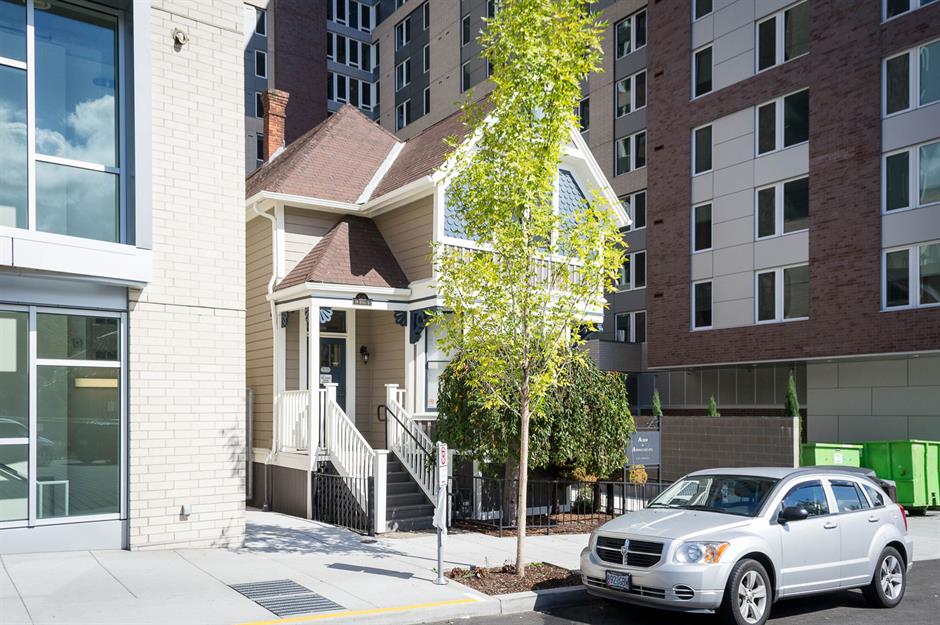
Randal Acker vs. TriMet
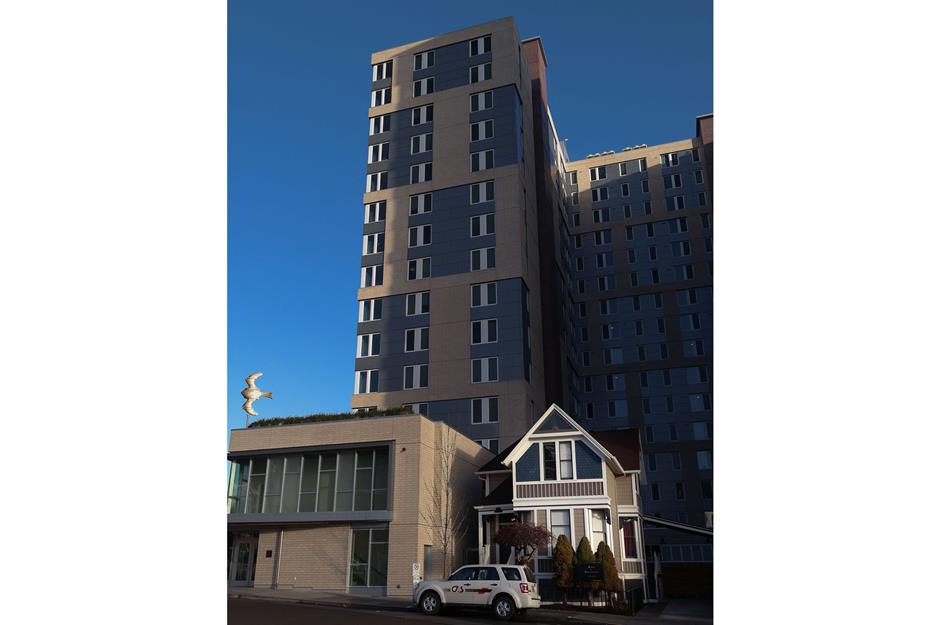
The student residence halls project went ahead and was constructed around the historic house. Enjoying the last laugh, Acker celebrated his triumph in 2011 by buying 400 helium balloons, which were tied to the chimney of the house, a homage to the movie Up.
Yang Youde vs. Wuhan City developers

Yang Youde vs. Wuhan City developers

The headstrong farmer, who was clearly prepared to go all out, constructed a makeshift watchtower and cobbled together an armory of flame-throwing bamboo bazookas to repel the developers, earning him the moniker 'Rocket Man'.
Yang Youde vs. Wuhan City developers

Apartment block residents vs. the Government of Guangzhou

Apartment block residents vs. the Government of Guangzhou

Apartment block residents vs. the Government of Guangzhou

The local government reportedly promised the residents that it would build a sound barrier around their homes but the pledge doesn't appear to have been honored. Whether the homeowners and their families can put up with the noise and pollution long-term remains to be seen but recent images show the properties are still standing.
Luo Baogen vs. the Government of Wenling

Luo Baogen had scrimped and saved the equivalent of almost $77,000 to build his home in Wenling, China, so when the local government approached him in 2008 to buy the property for $28,000 in order to demolish it to construct a highway, the hard-working duck farmer was understandably up in arms.
Luo Baogen vs. the Government of Wenling

Luo rejected the offer in no uncertain terms and the government built the highway around his home. In the meantime, the plucky poultry farmer and his wife fought the authorities for a decent payout, a property feud that went on for four years.
Luo Baogen vs. the Government of Wenling

Weary from his arduous fight, Luo finally accepted $42,000 for the property which, though considerably less than what he spent to erect it, was a marked improvement on the initial offer of $28,000. The house was finally demolished in 2012 and Luo's case, which had gone viral around the world, was closed.
Loved this? Like and follow us on Facebook for more fascinating real estate stories
Comments
Be the first to comment
Do you want to comment on this article? You need to be signed in for this feature